Yamaha YDX-Moro 07 E-MTB
By Russell Downie, Images iKapture
As an avid mountain biker since almost the day I could walk, and an avid motorcyclist in almost all forms since I obtained a licence at 16 – a mountain bike with an electric motor and battery added seems almost too good to be true… The perfect harmony between my two hobbies.
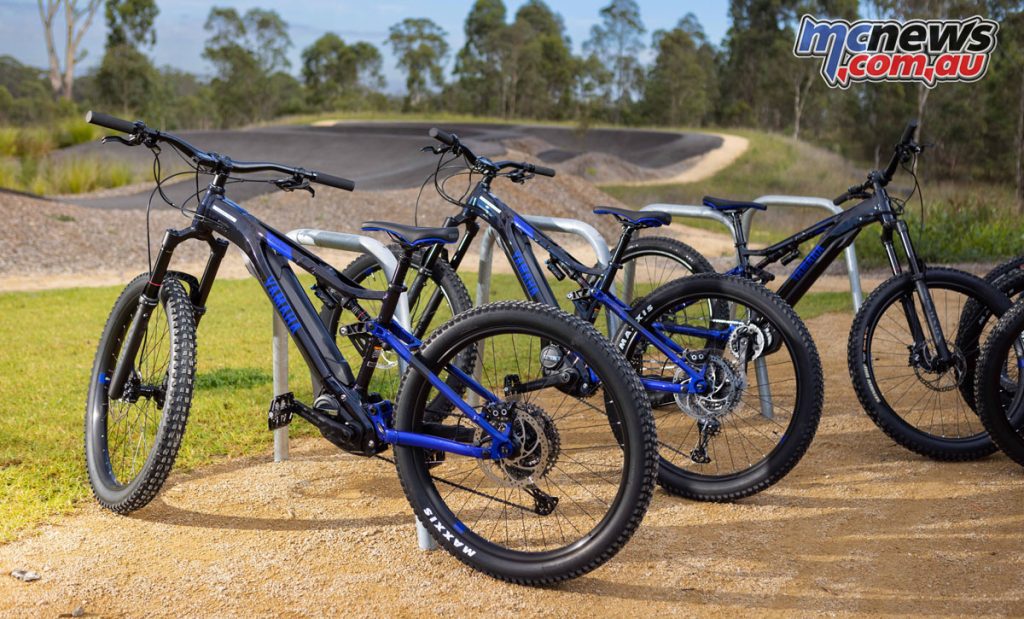
Since my first ride on a Specialized Turbo Levo Electric Mountain Bike (E-MTB) in 2016 (one of the first major brand, integrated, hub-drive bikes available in Australia), I have taken every opportunity to throw a leg over one, as the ride has proven just as much fun as it sounds!
Which brings us to today, the Australian Launch of the Yamaha YDX-Moro 07 E-MTB, held in sunny conditions at the Wylde MTB Park in Sydney’s South West.
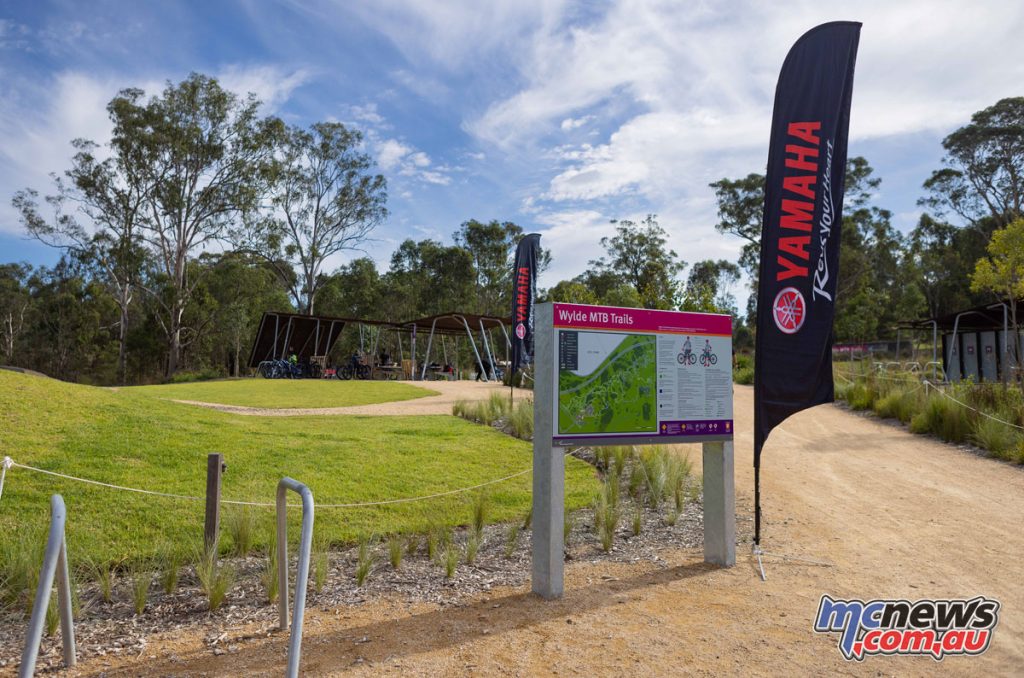
For those who are unfamiliar with the concept, picture a regular mountain bike, with a battery mounted in the frame, and a small electric motor mounted where the traditional bottom bracket would be (in-between your feet).
To access the power on offer, you simply pedal. The more you pedal, the more electrical assistance the motor provides you.
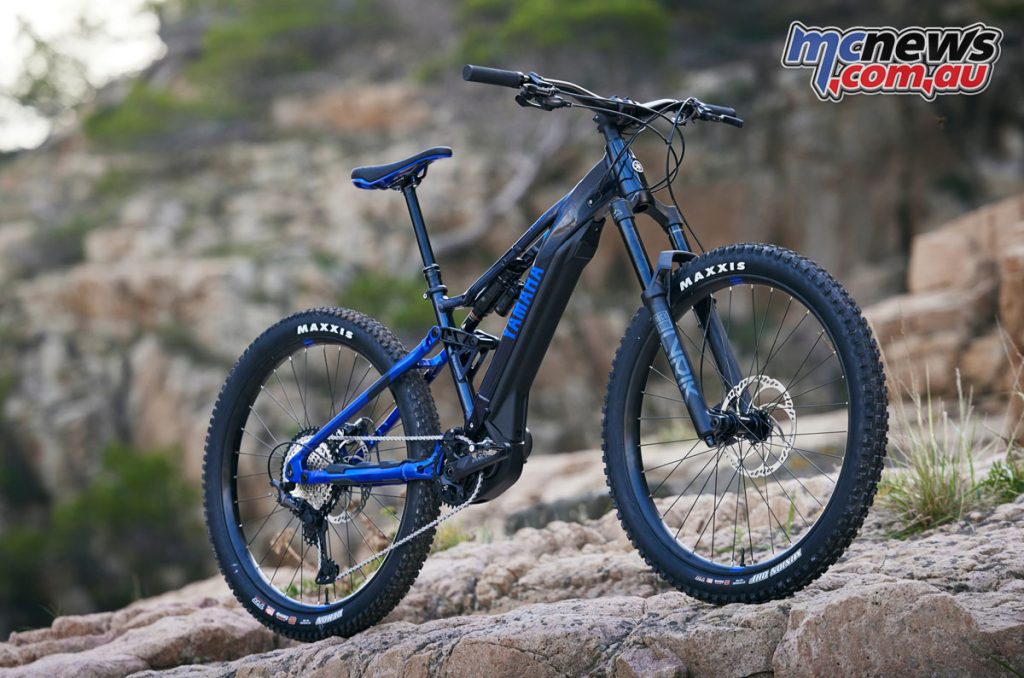
There is no throttle, and the assistance cuts out at 25 km/h, as per Australian regulations. So, the Moro, like all E-MTB’s sold in Australia, is closer to a mountain bike than a dirt bike.
However, the extra speed you can carry, and the extra grip and stability offered by a chassis with a phenomenally lower centre of gravity than a normal pushy, does feel a little like a dirt bike in certain circumstances.
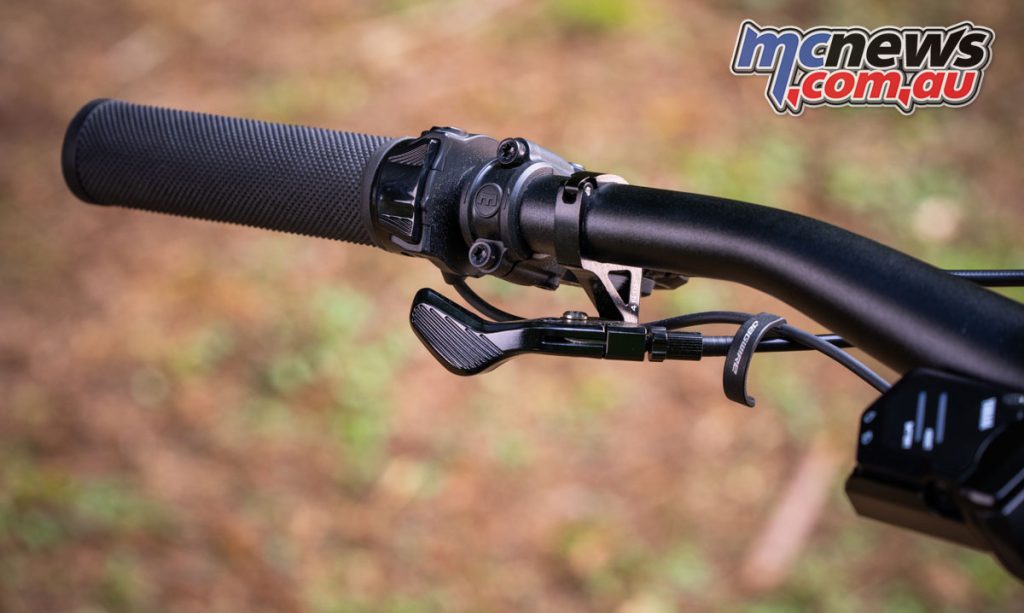
There are switches on the left-side of the handlebar which allow you to cycle through five different power modes, so you can choose more go – less battery life, or vice versa.
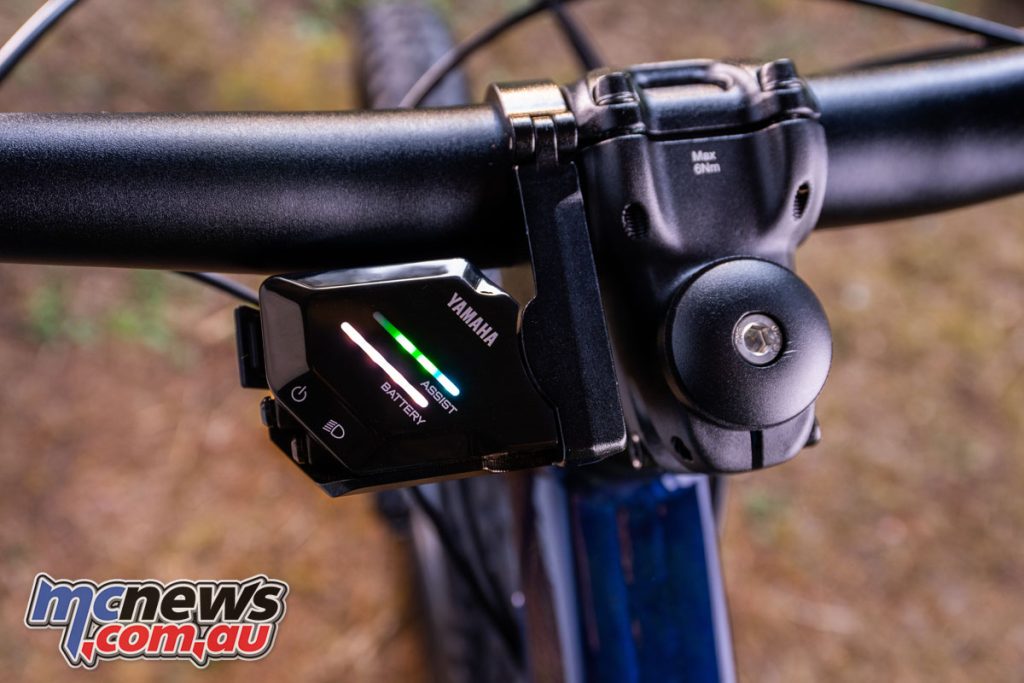
Meeting the Moro in person, it’s a neater and more slender package than the pre-event photos and 160 mm front/150 mm rear suspension travel had me expecting. The ‘twin split’ alloy frame design certainly won’t have people confusing this model with anything else on the market!
The gap between the two beams also makes the battery charging port and rear shock adjuster easier to access. The visible welds on the frame are chunky, and exude a heavy-duty vibe. The paint has a nice glossy finish.
The drivetrain, suspension, tyres and braking system are well known and respected MTB products from Shimano, RockShox, Maxxis and Magura respectively, and do a great job of adding a touch of class to the package.
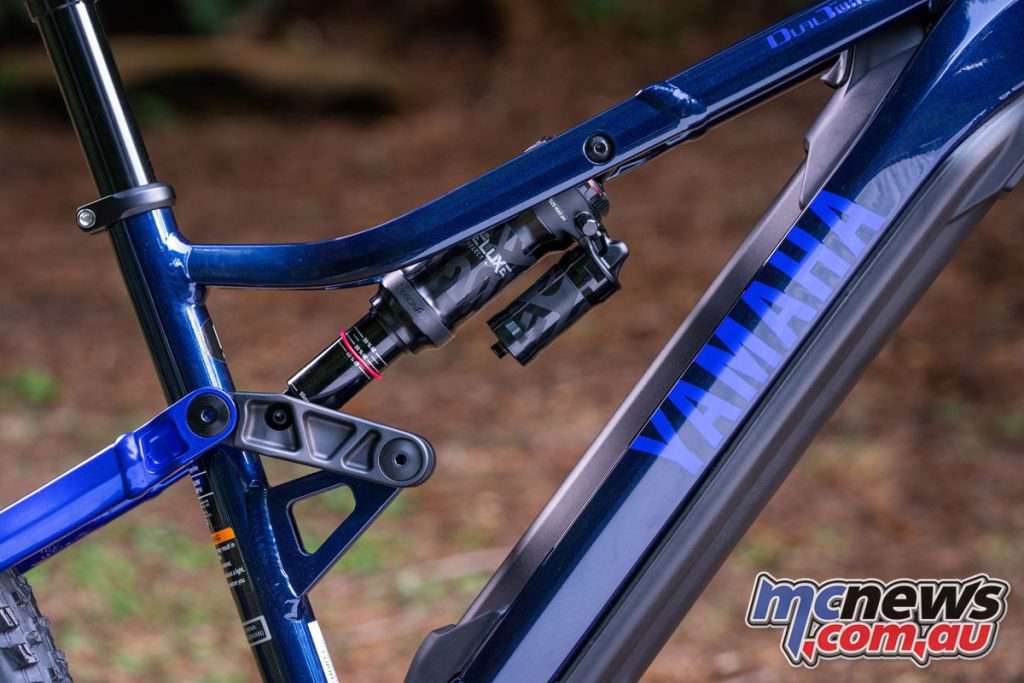
At $8,999 ride away, it sits right in the middle of the crowded all mountain E-MTB class in Australia. That said, some competitors at this price point do have slightly lower specification components. Plus the transferrable frame and motor warranty (three years), and battery (two years), is quite respectable.
Yamaha have been making electric motors for bicycles of various types for decades, but only recently have they started making their own frames, choosing their own components and creating a complete package. And this is the first time any of their bicycles have landed down under.
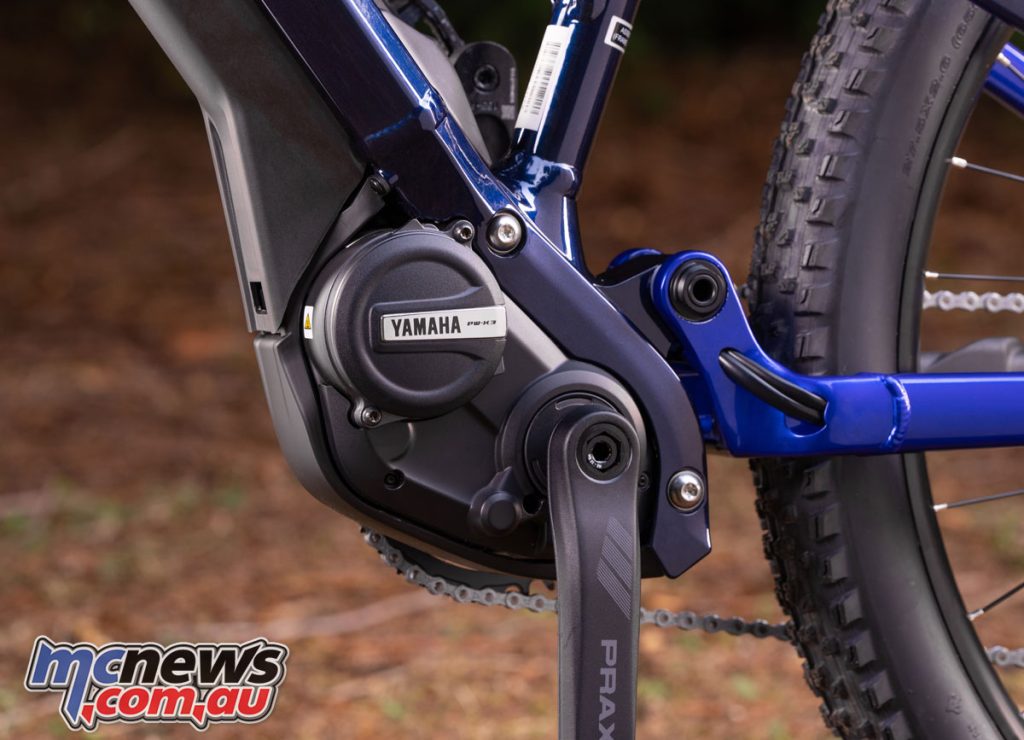
Apart from the bespoke frame, the Moro differs from other Yamaha Powered E-MTB’s in that the software controlling the power is all of their own making. The Moro even takes data from an inclination sensor, along with the ubiquitous wheel speed, rider torque and RPM, enabling the software to modify motor output as steepness increases, when the rider selects automatic support mode.
Yamaha have chosen to sell the Moro through its existing Land Mobility dealer network in Australia (well, the 55 dealers so far who have chosen to purchase a point-of-sale set up, and have workshop staff completing training).
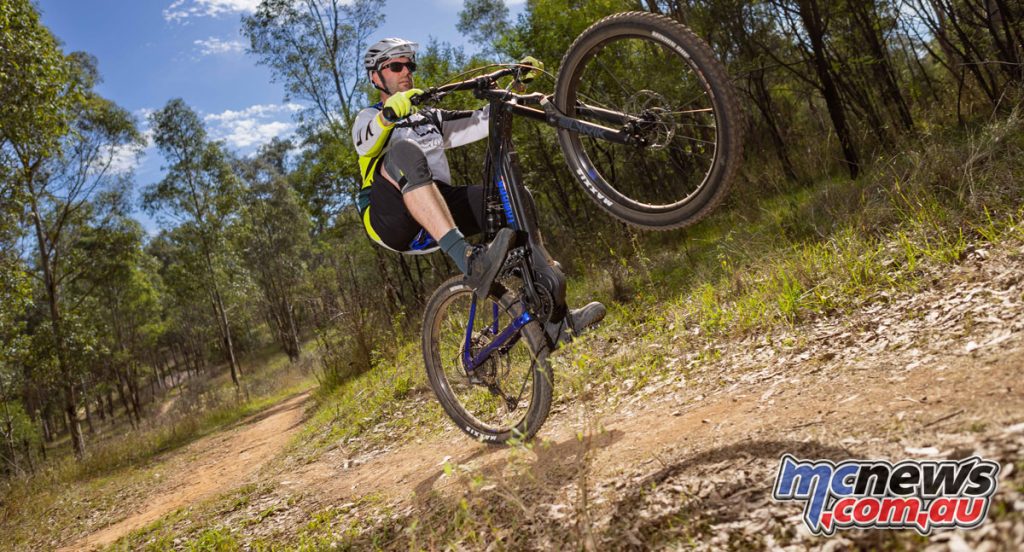
Their main target market is existing Yamaha dirt bike riders, who want to add one more arrow to their quiver of toys. They have not built or specced this bike to take on the existing heavy hitters in the Australian E-MTB landscape.
However, the big brand components, smooth high-torque motor and easy to ride nature may have some customers buying a Yamaha for the first time. The other interesting aspect of selling a mountain bike through motorcycle and powersport dealers, is that it gives customers access to Yamaha Motor Finance (YMF), which definitely could sway buyers to go blue on the back of the ease that process offers.
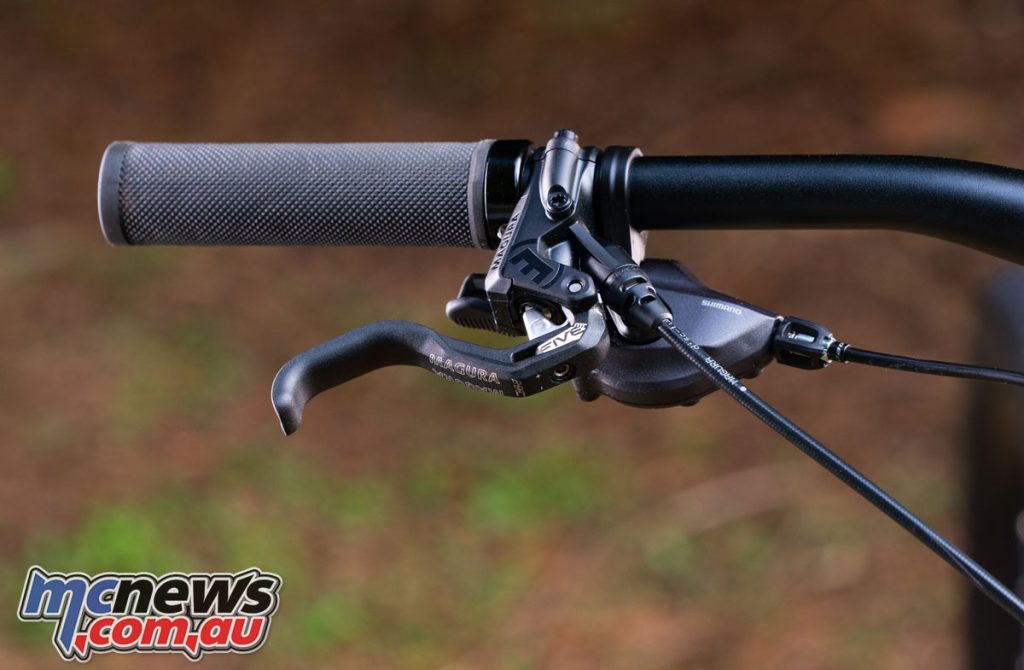
Combined with the impressive range of genuine accessories, clothing and cleaning products, this makes buying or financing a Moro and almost all the kit required a one-stop process.
There was a mix of motorcyclists, cyclists and Yamaha Team MX and Superbike riders in attendance, and everyone got along with the bike and had some fun. Which is absolutely what this bike is about.
The geometry is conservative, meaning the bike is more suited to mellower flow and intermediate trails than it is super-fast, super-technical descents at warp speed. The key numbers are a 66.2 degree head angle, a 70.2 degree seat tube angle and reach numbers of 392 mm, 436 mm and 482 mm across the range.
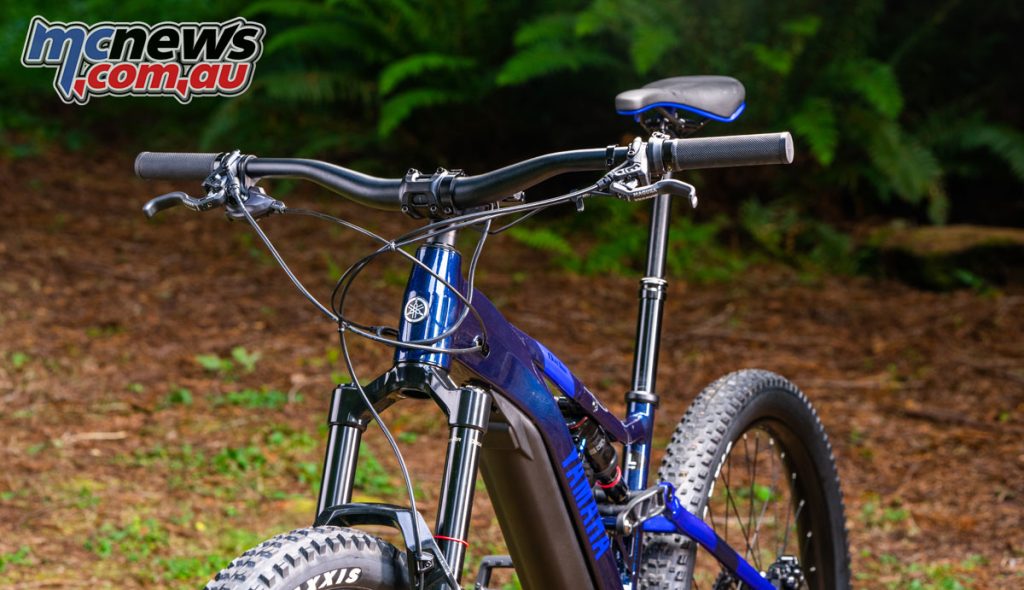
27.5 inch diameter wheels front and back are used, with good quality and high grip Maxxis 27.5 x 2.6 inch tyres fitted as standard to the unbranded 40 mm internal wheelset.
However, the Moro is only available in three sizes, Small, Medium and Large. That means that this testers’ lanky 192 cm 100 kg carcass was not well catered for.
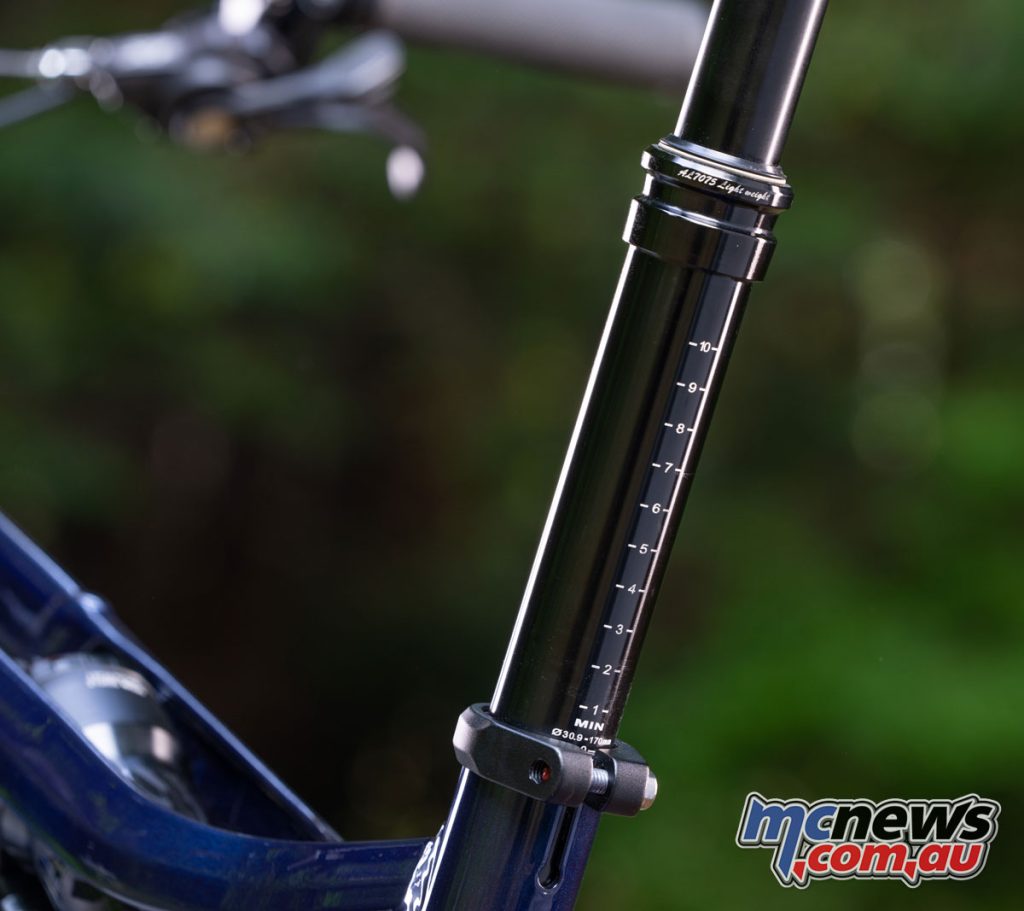
The unbranded 170 mm dropper post was at minimum insertion, and I slid the Velo lock on grips 10 mm off the end of the bars to try and give me some room in the cockpit, with the stem above all the supplied headset spacers.
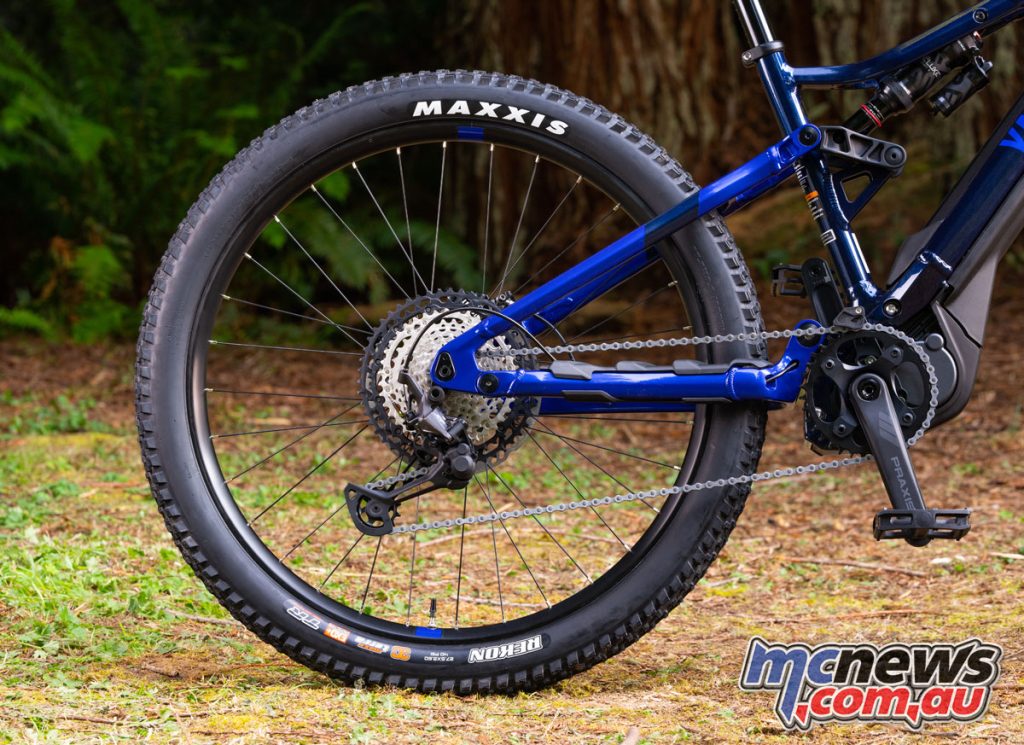
However the small frame didn’t help me get the most from the bike, especially early on in the day. The geometry, sizing and suspension performance on offer continues to confirm the theme that this is a “90 per cent” bike. It will suit 90 per cent of riders for 90 per cent of the time, and doesn’t pretend to be everything for everyone.
Riding the bike around the relatively smooth, hardpacked and not particularly steep test ride loop was a tale of two halves. Leaving the trailhead, I made the mistake of trying to keep the invited professional Yamaha racers in sight, and was pushing beyond where my fitness and skills are truly comfortable.
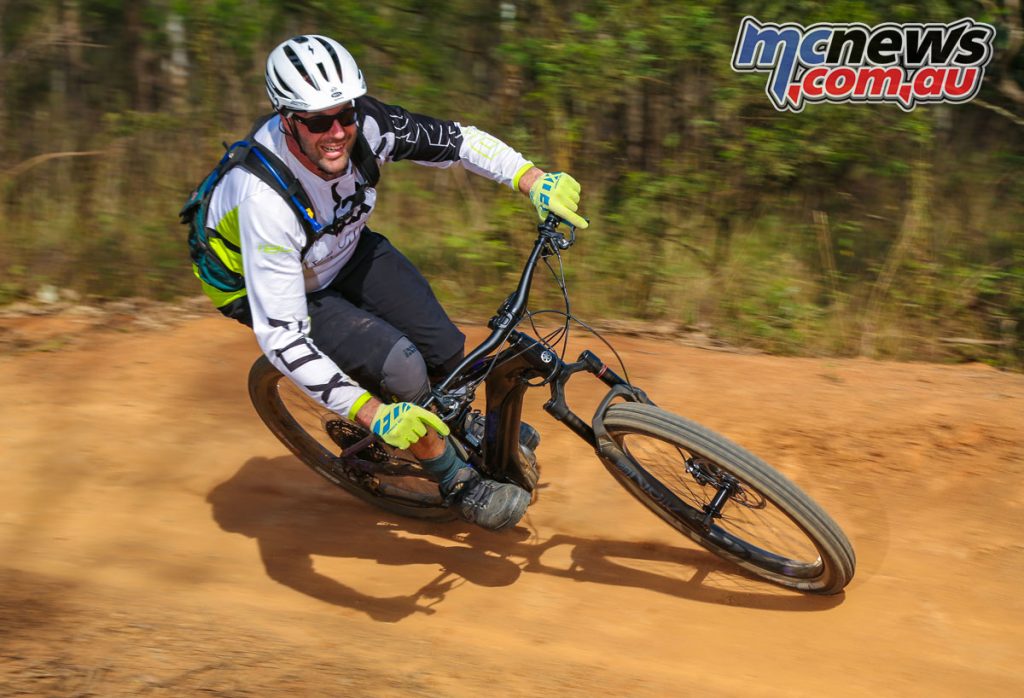
Combined with the small frame size, slack seat tube angle and small cockpit (unbranded 40 mm stem and 780 mm handlebars), I was regularly running wide on corner exits – especially up hill, and generally feeling like I couldn’t get the tyres to bite the ground.
I also struggled to have the motor assist me smoothly, cycling through all of the higher assist modes – as I wasn’t concerned about battery life. There were often moments where a big gulp of torque unsettled the 150/160 mm travel platform. It also meant arriving at some features faster than they were designed to be ridden, causing a few jumps to be landed too flat!
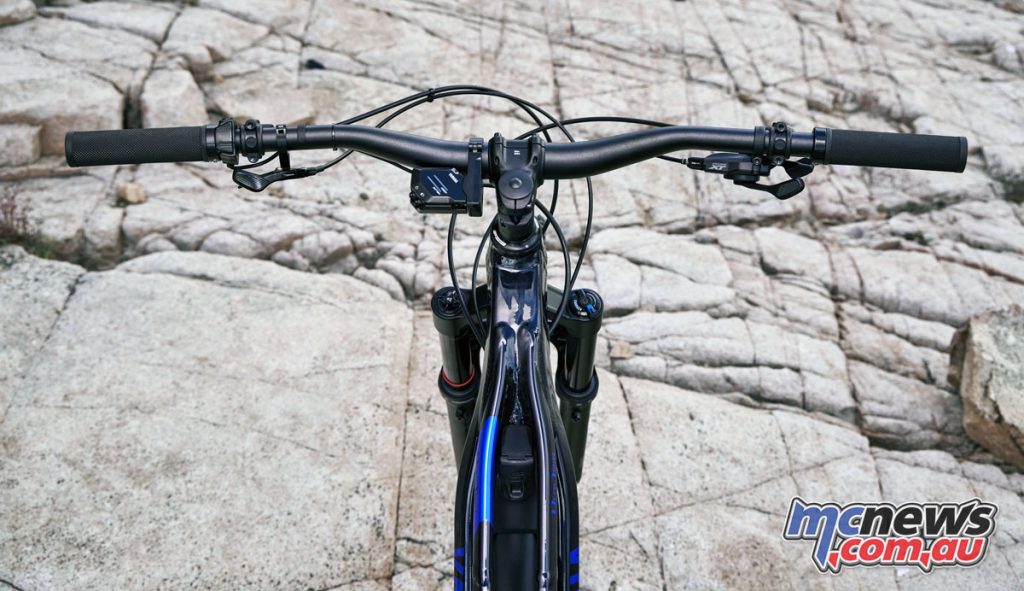
En route back to the trailhead I was starting to enjoy myself more. As the trail headed downhill I started to focus more on correct cornering technique, and learnt how to weight the tyres in the way the chassis wanted.
Pausing the loop for some sessioning of the drops and jumps on offer was a good chance to hit a few berms and features over and over, and I started to genuinely enjoy what the Moro has on offer.
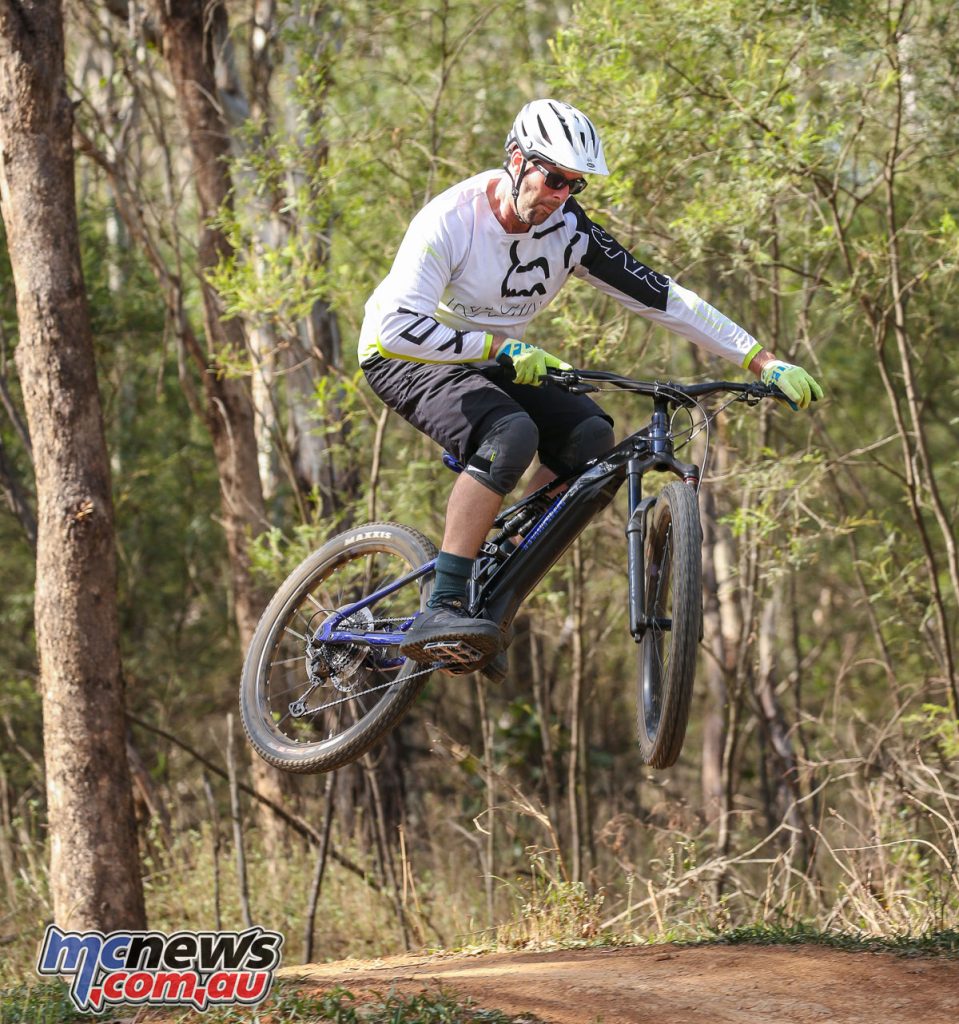
The jumping session also demonstrated that the OEM rear wheel is well and truly capable of withstanding a few decent cases and some sideways landings, as those present tested the limits!
After lunch I left for a solo lap of the 12km loop, and with a fresh mind, and riding to my own pace, the bike came alive. I was no longer struggling for mid corner grip, the software was giving me just about the exact torque I wanted – in all of the three highest power modes – and the supple RockShox Lyric Select fork and Super Deluxe Select+ shock were far more comfortable providing support at this more suitable trail speed.
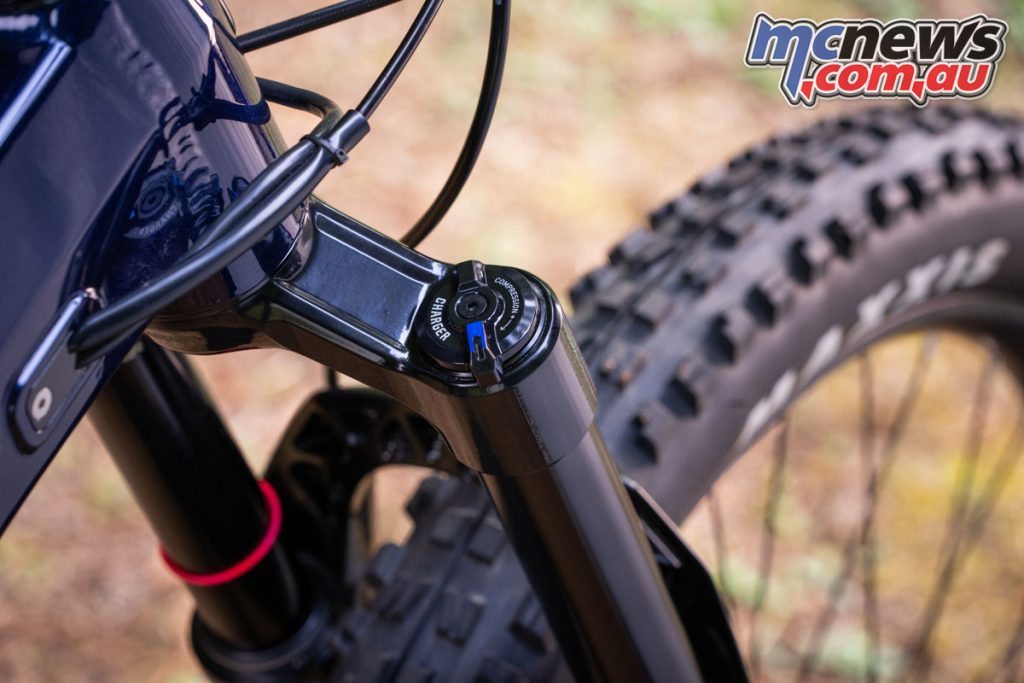
Although sag was set to the recommended 20 per cent front and 30 per cent rear for the day, I write this review with a swollen left ankle, as the shock was pretty keen to blow through travel if I landed anywhere close to flat, or mistimed unweighting over obstacles.
Once the suspension had bottomed out, the force was up to my body to deal with! I’m sure the shock could be tuned to suit me better, but as previously mentioned, I believe I am outside the genuine window for the size Large bike, and the supplied tune should match someone within the window well.
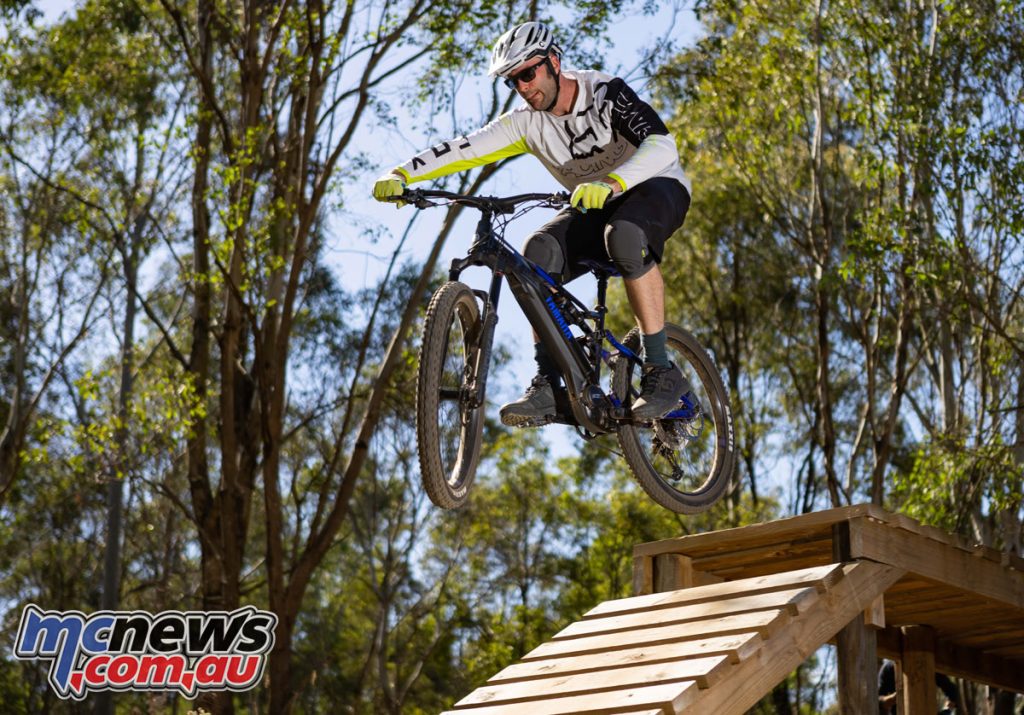
By the time the second lap reached the descent, the Magura MT5 four piston brakes, with 203 mm rotors and radial master cylinders had bedded in nicely, and I was really enjoying the very smooth predicable power on offer.
Weighting the bike correctly in the centre of the 1254 mm wheelbase, I was starting to carve turns up with decent lean angle and confidence. The Maxxis Minion DHF / Rekon tyre combo is well proven, and was well up to the task.
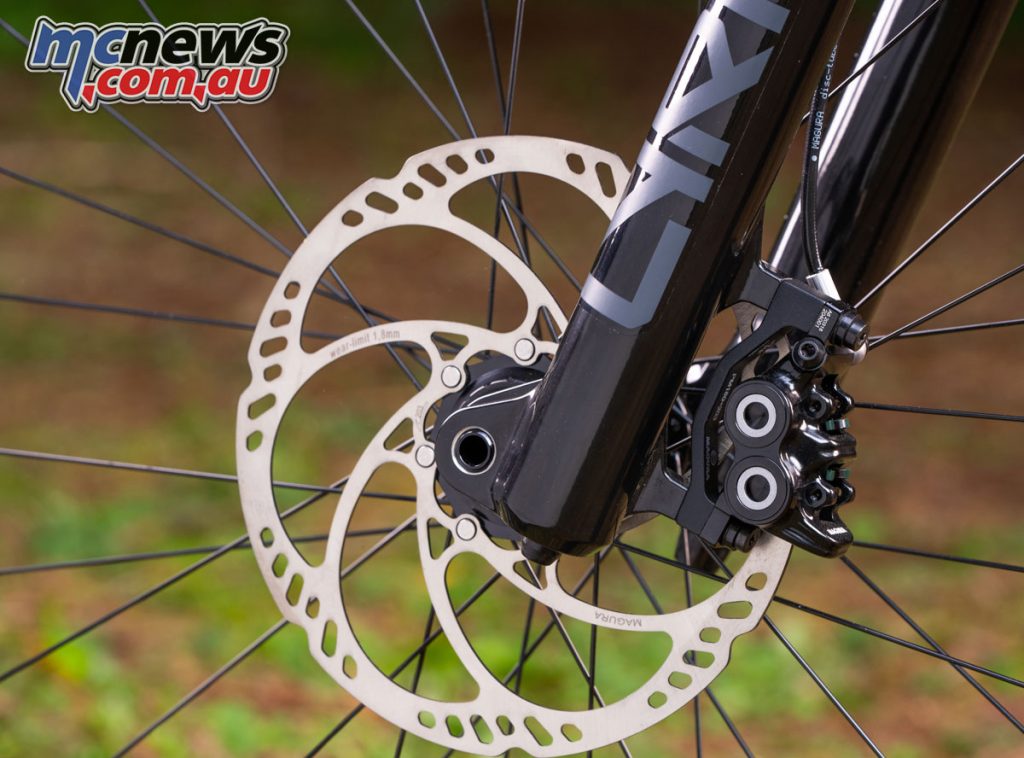
A last run down the jump line was extreme fun, the compact frame dimensions, 27.5 inch wheels and quality components giving me the confidence to throw a few shapes into the equation. I reached the end of the 30 km ride with almost no thought about the Shimano XT 1×12 speed drivetrain, which is always a good sign that a product is doing the job required with a minimum of fuss. And this brought a post ride conclusion of “balance”.
It seems like the whole package is doing exactly what it was intended to do. There is no one component or feature that really stands out, either positively or negatively. And while it may not have the amazing performance that some modern long, low and slack E-MTB’s do, it does what it does well.
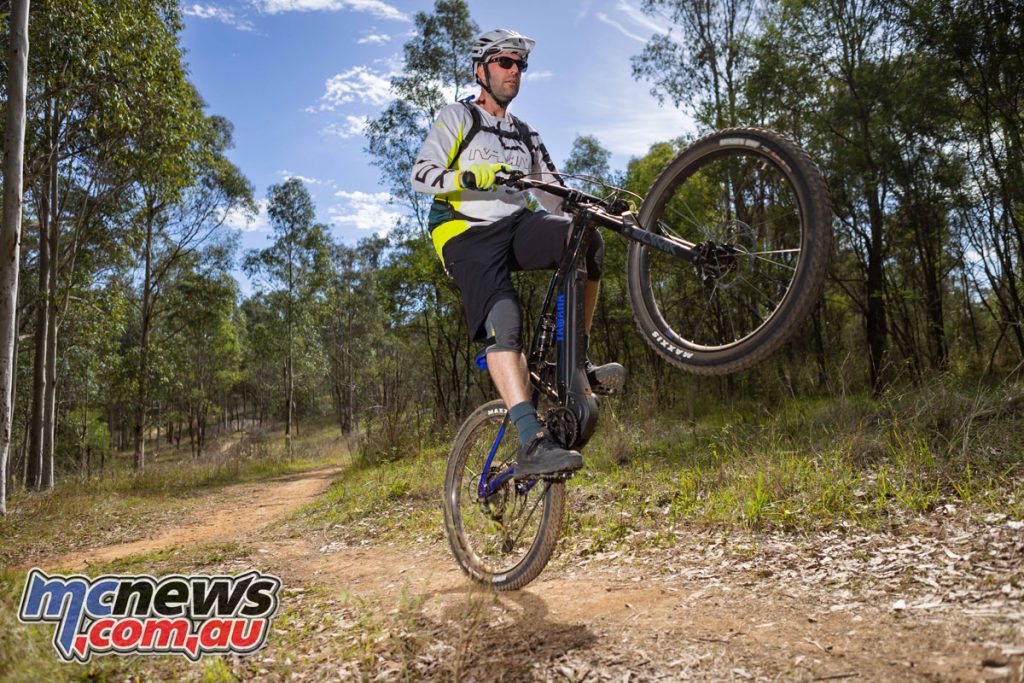
As an experienced rider who was pushing the envelope of what the design team intended, the only things I would change if I owned one were touch points and size related items (dropper seatpost, handlebars, stem, grips and saddle). That is extremely commendable on a bike which sits far closer to the cheapest in class, rather than the most expensive.
Post ride the only problems encountered for the assembled group was several riders dropping chains, seemingly due to the excellent M8100 XT derailleurs not having the clutch feature activated pre ride. There was also some noticeable scuffing of the paint around the headtube, where the cables had rubbed.
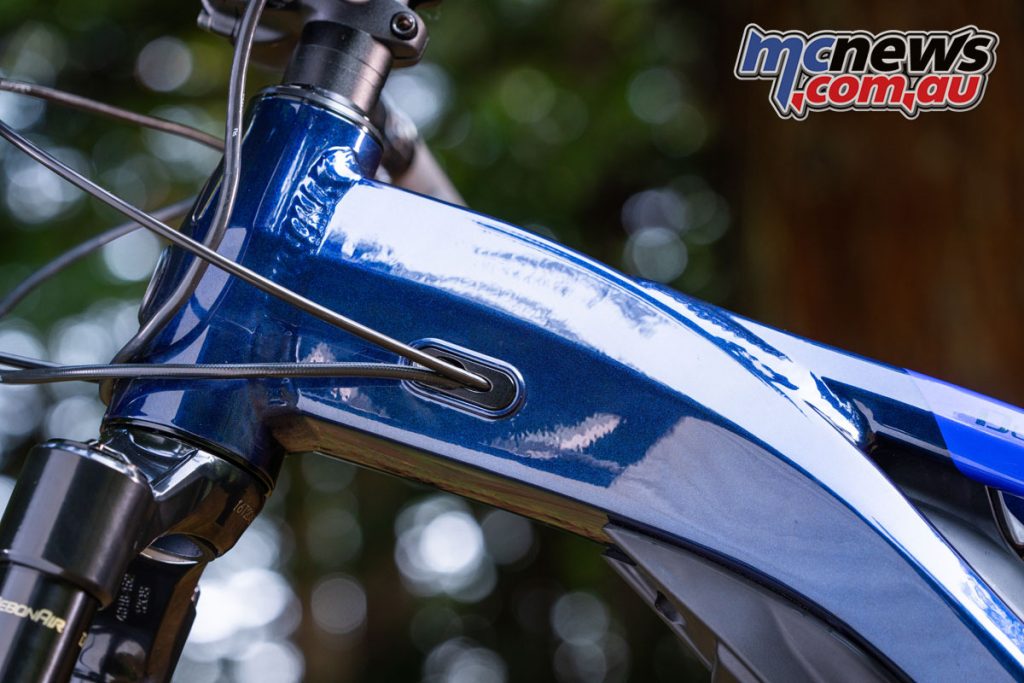
I’m not sure if this could be sorted with careful cable routing, but I would definitely be sourcing some clear paint protection film for the area if I was to own one, as the flat rub marks were immediately obvious next to the glossy black paint up front.
Meanwhile, the display which indicates power mode selected and battery life showed only 1 of 4 bars remaining after my 30 odd km. Now, this is hardly a precise scientific experiment of battery range, but it does indicate that a larger or heavier rider, using the higher power modes, may struggle to do more than 40 or 50 km between charges.
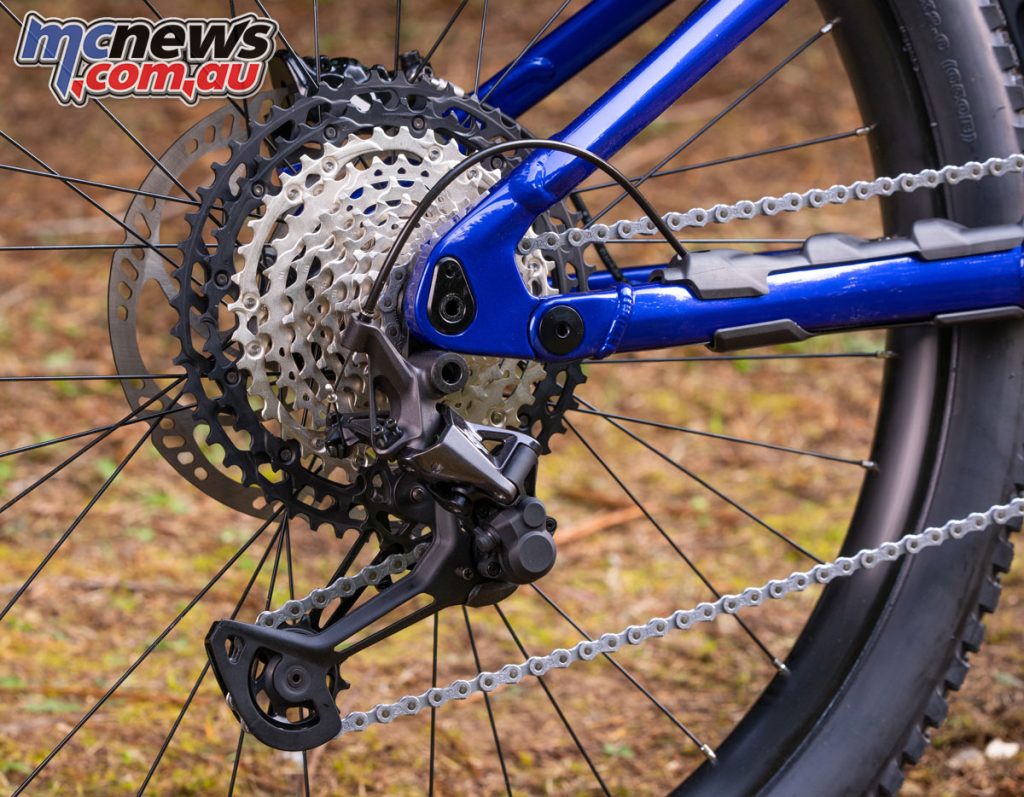
Yamaha claim the battery will charge to 80 per cent capacity in one hour though, so a lunch time charge before more shredding could be an option. Or, purchase a second 500 Wh battery (price to be confirmed for Australia), and with a multitool and 10 mins work, be ready to send again.
The display is one slight disappointment. Some competitors with similar sized displays will show trip data – like km travelled, time taken, average speed etc – this does not. Other drawbacks were the cockpit ergonomics, I found the dropper post lever awkward to reach, and many times bumped the power mode buttons unintentionally.
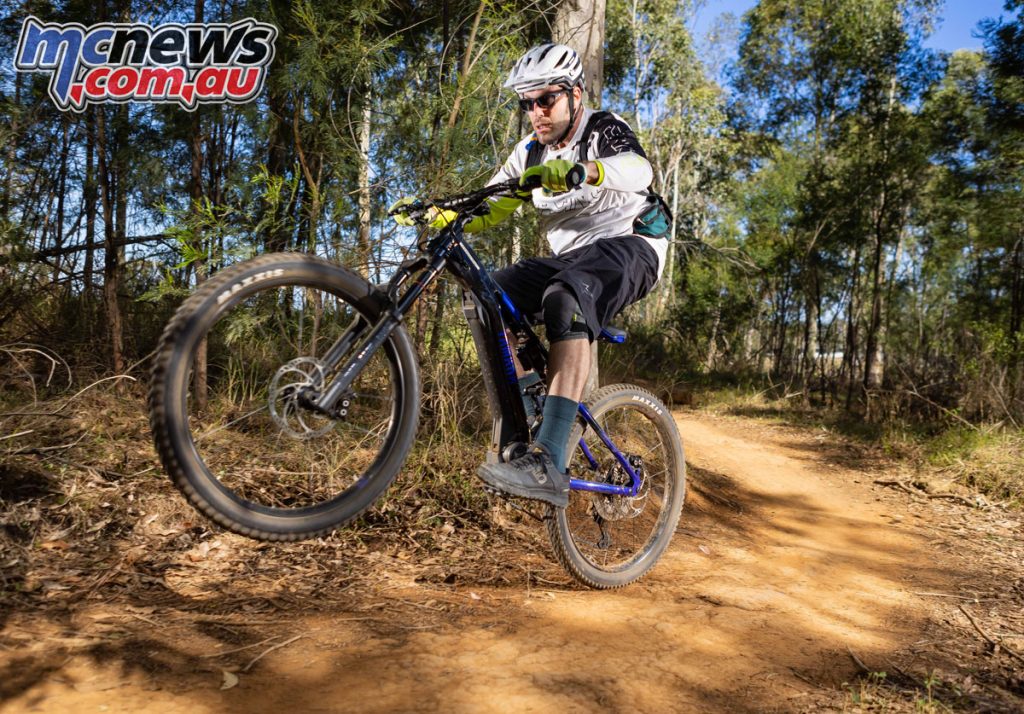
Just like the cable routing and the inactive rear derailleur clutch, I can’t help but wonder if experienced MTB specific mechanics may have found solutions quicker than the re-trained Motorcycle techs present on test did?
Also of note is that there is no space within the main triangle for a traditional water bottle, so riders on longer loops will need a hydration pack or similar.
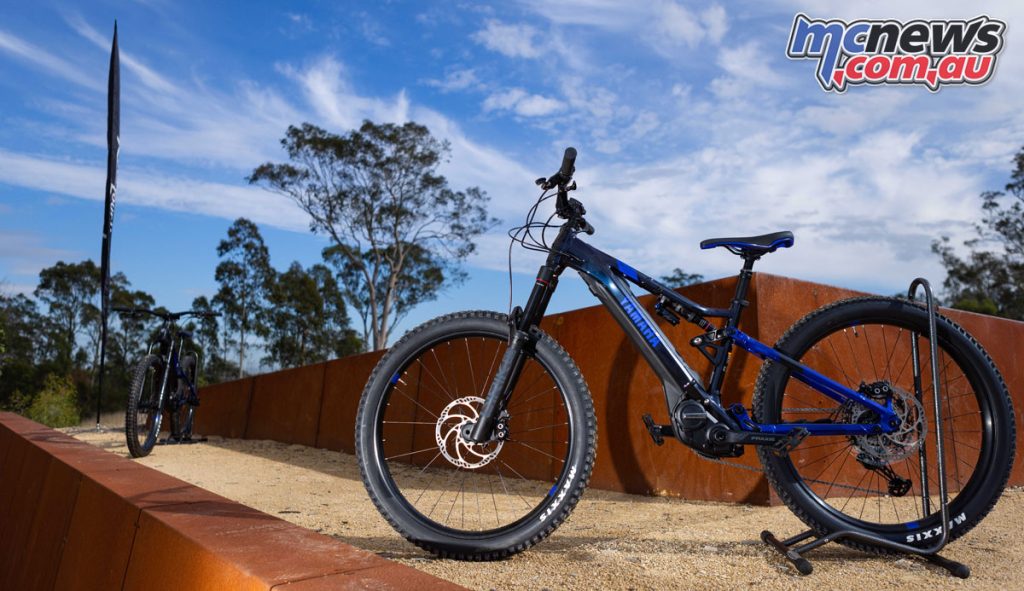
To conclude, the new Yamaha YDX-Moro 07 E-MTB is a well-appointed, competitively priced and capable E-MTB. Its ease of purchase/finance, good quality components and balanced ride will appeal to a large cross section of riders – particularly at the beginner and intermediate end of the spectrum.
With a little time spent tidying up the cockpit ergonomics, and with suspension dialled in to suit the rider, the bike will be able to handle 90 per cent of riding that 90 per cent of riders tackle in Australia. Sounds like the team at Yamaha have done exactly what they set out to do, Bravo.
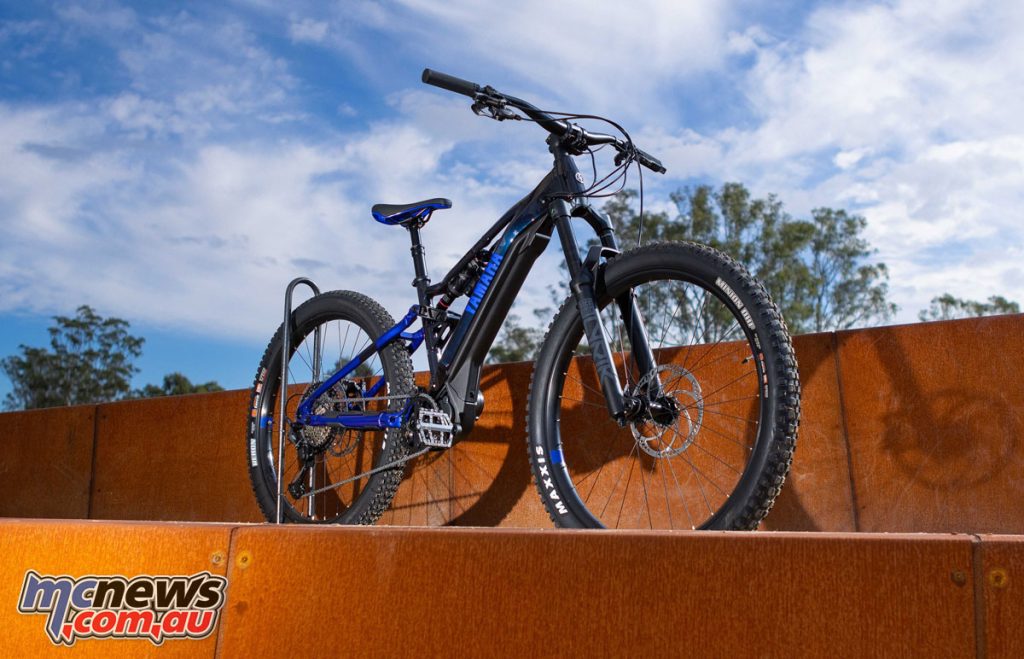
For Cru Halliday and Mike Jones’s thoughts on the Yamaha YDX-Moro 07 check out:
YRT’s Jones & Halliday get on the YDX-Moro 07 pedals
Yamaha YDX-Moro 07 E-MTB Specifications
| Yamaha YDX-Moro 07 E-MTB Specifications | |
| Price | $8,999 Ride-Away |
| Riding Type | All Mountain |
| Colours | Icon Blue |
| Size | Small, Medium, Large |
| Drive Unit | Yamaha PW-X3, 85 Nm |
| Battery | Yamaha Lithium Ion 500 Wh, 36 V, 13.4 Ah |
| Display | Yamaha Interface X |
| Max Speed with Assist | 25 km/h |
| Frame | Yamaha Dual Twin alloy frame |
| Fork | RockShox Lyrick Select RC, 160 mm travel, 37 mm offset |
| Rear Shock | RockShox Super Deluxe Select+ RT 210×55 Debonair Yamaha tuning, 150mm travel |
| Headset | Integrated tapered with 30 mm steerer spacers |
| Handlebar | Alloy 780 mm wide, 35.0 mm dia. 30 mm rise |
| Stem | Alloy 4-bolt faceplate, 40 mm length, 35.0 mm dia. |
| Grip | Velo lock on grip |
| Saddle | Yamaha Off-Road Cro-Mo Rail, antislip |
| Seat Post | Alloy 30.9 mm dia. dropper post. (S) 125 mm travel, (M) 150 mm travel, (L) 170 mm travel |
| Shifters | Shimano SL-M8100-R, XT, 12-speed |
| Rear Derailleur | Shimano RD-M8100, XT, SGS 12-speed |
| Crankarm | Praxis AL6000 w/bolts 165 mm |
| Chainrings | Praxis 36T |
| Chain | KMC e12 TURBO EPT 12-speed |
| Cassette | Shimano XT CS-M8100-12, 12-speed (10-51T) |
| Brakes (F/R) | Magura MT5 with 203 mm Storm CenterLock rotors, 4-piston |
| Wheels | 27.5+ alloy, 40 mm inner rim width |
| Tyre Front | Minion DHF New EXO+ /3C MaxxTerra 27.5×2.6 |
| Type Rear | Rekon New EXO+ /3C MaxxTerra 27.5×2.6 |























